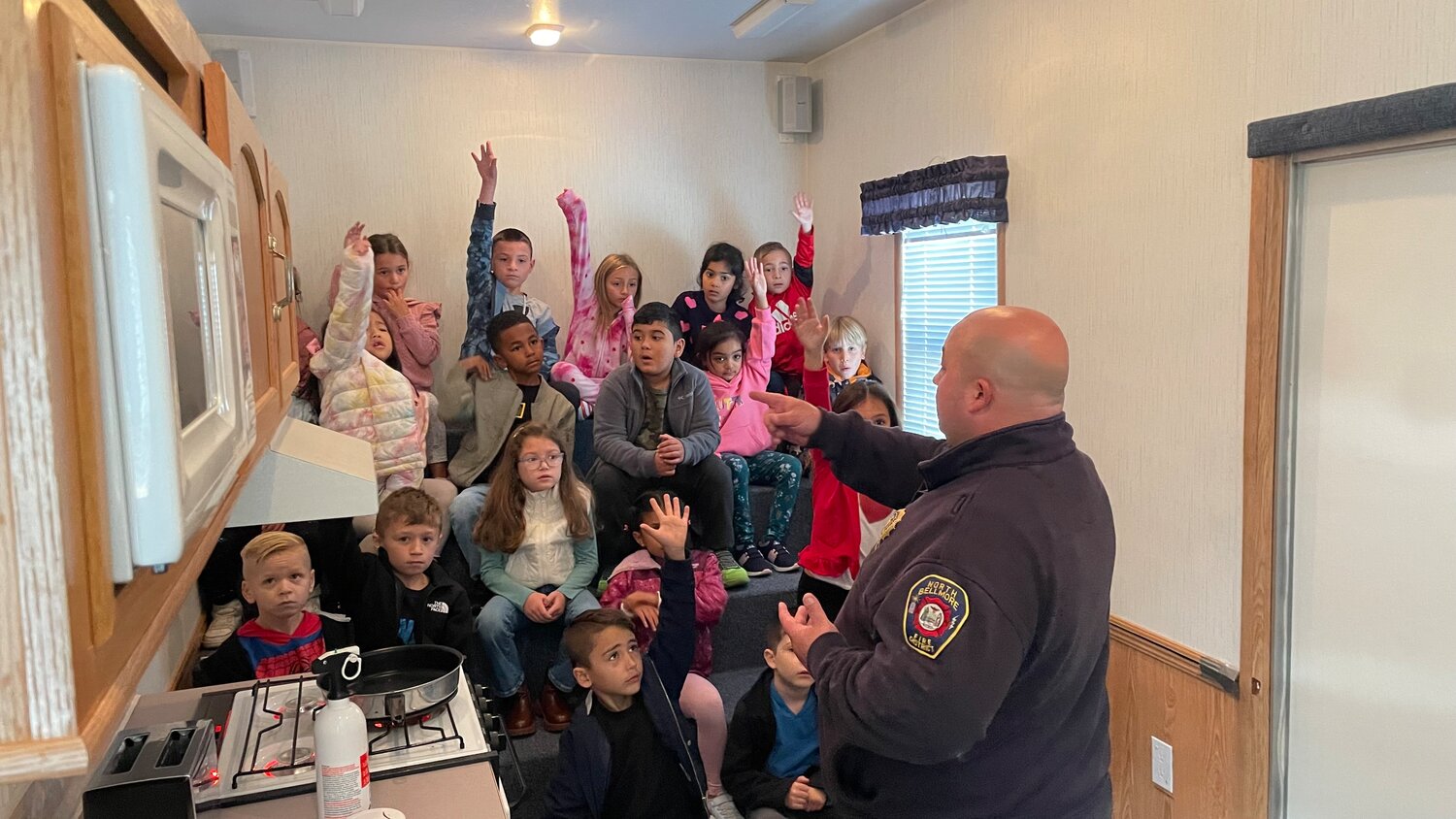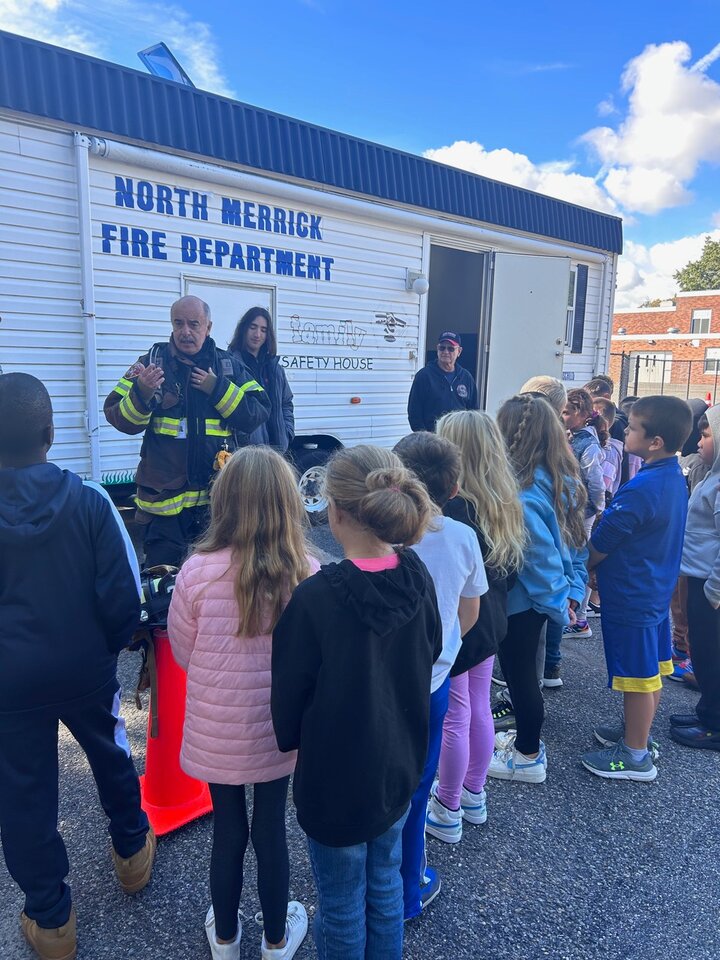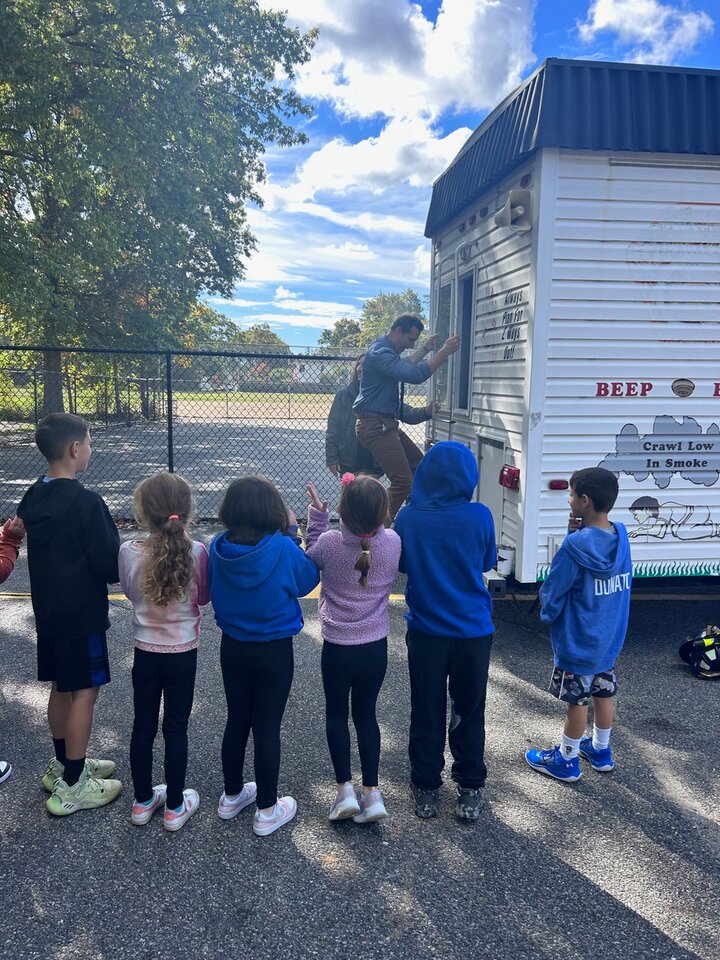In North Bellmore School District's elementary schools, fire safety is key
The North Bellmore School District had an informative October, thanks to the efforts of school officials and local fire departments. During Fire Prevention Month, the schools welcomed the North Bellmore and North Merrick fire departments, whose members taught kindergartners through third-graders how to prevent fires in their homes, how to talk to their families about plans for emergencies, and how to escape safely from a home that’s on fire.
Throughout the month, fire departments stopped by the district’s schools, four of them in North Bellmore and one in North Merrick. The firefighters brought fire trucks and “smokehouses,” which simulate the conditions of a fire.
Fire officials from North Bellmore and North Merrick gave interactive demonstrations during their visits to the Saw Mill Road and Park Avenue schools on Oct. 17.
Saw Mill Road School
Jeff Rosof, Saw Mill Road’s principal, said the school invites the fire department to come every year.
In the smokehouse, which has a makeshift kitchen and living area, classes of students watched a presentation and took part in a drill. “They go in and go over home fire safety,” Rosof explained. “It’s called a smokehouse because they actually fill it with not real smoke, but the kids get to go out the back. They talk about fire safety, get some handouts, get a little tour with the firefighters of the trucks — they get to go in the truck, and they see all the different equipment.”
Sal Ancona, the fire inspector and fire prevention officer for the North Bellmore Fire District, led the presentation inside the smokehouse. This year, he said, the focus of Fire Prevention Month was kitchen safety.
In the smokehouse, Ancona said, “We talk about ways to prevent fires in the kitchen, having fire extinguishers, having working smoking detectors. We talk about ways to get out of the house, practicing a fire escape plan, about having a good meeting spot for when you get out of the house.”
Some of the other things department members go over with kids, Ancona said, include learning how to dial 911. “A lot of families don’t have (landline) phones in the house anymore,” he said, “so having children practice with their family members using their phones, gaining access to their phones, and learning how to call 911 is really powerful. We also instruct them that you don’t need a password to get into a cellphone — you can always make an emergency call.”
Each year, Ancona said, the department instructs about 2,000 children during Fire Prevention Month. Firefighters also focus on familiarizing kids with the sound of a smoke detector, teaching them that they can escape a fire through a door or window, and showing them what firefighting gear looks like — so they’re not scared if a firefighter comes to rescue them or helping them escape from a fire.
Park Avenue School
Park Avenue hopes to extend the reach of fire safety from schools into the community and real-life situations, Principal Michael DeBlasio explained.
Young students had the opportunity to experience a smokehouse, a simulation of what a real fire is like, and learn how to safely get out of an emergency situation.
Before experiencing the smokehouse, though, students were given a presentation on basic fire safety, prevention, and what to do in case of an emergency at home — especially if you’re alone.
The theme was self-sufficiency. “It allows us to use the fire department to extend our reach to these children that could be real-life situations where they might not have an adult available,” DeBlasio said.
Beyond stop, drop and roll, students learned ways to help the fire department get them to safety — by finding a window and being as loud as they can.
Leslie Gomez, past commissioner of the North Merrick department, also introduced the gear and masks worn by firefighters. The goal was, should students find themselves caught in a fire, they won’t be afraid of those helping them.
“It’s scary, especially in a fire — it’s very noisy, with smoke alarms going off, Gomez said. “There are all sorts of noises and banging.”
Students were also given basic safety homework — to learn their address, make an escape plan, choose a place to meet up with their family, and have their parents check the smoke detectors.
“When we bring in the fire department, and they see them in their garb and what they’re wearing, and their uniforms, it definitely makes it a little more real — which is very cool,” DeBlasio said. “And we couldn’t do that without the fire department. We’re looking at safety, not just in the building, but teaching life skills.”

 79.0°,
Partly Cloudy
79.0°,
Partly Cloudy 











